Table of Contents
Are you a fitness enthusiast who is interested in fitness app development that can help people achieve their fitness goals?
With the increasing number of people using their phones to track their fitness goals, the demand for fitness apps has skyrocketed. In fact, the global fitness app market is expected to reach $14.7 billion by 2026.
According to a recent survey, more than 80% of Americans own a smartphone.
If you’re looking to tap into this market, there are several steps you need to take, costs to consider, and a tech stack to choose from.
In this blog, we’ll guide you through the process of fitness app development in the USA.
Moreover, we’ll cover everything from market research and ideation to design and development, and we’ll provide you with valuable insights and tips along the way. Plus, we’ll also discuss the fitness app development cost and help you choose a tech stack that is both reliable and cost-effective.
Whether you’re a seasoned developer or a fitness enthusiast with a great idea, this blog is for you. By the end of it, you’ll have a clear understanding of the steps involved in fitness app development in the USA, and you’ll be well on your way to bringing your app idea to life.
So, let’s get started and dive into the exciting world of fitness app development in the USA!
Fitness App Market Statistics
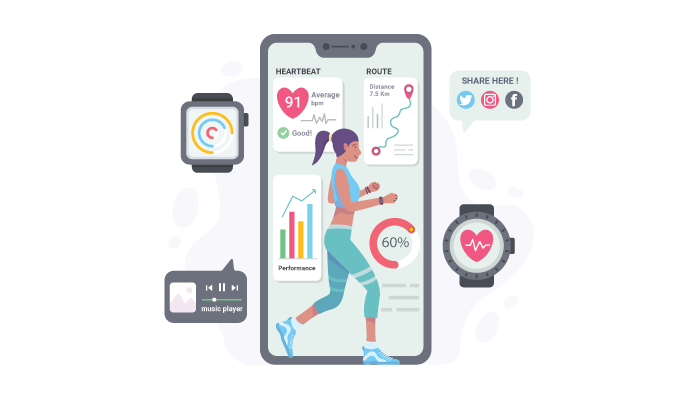
Fitness app development is growing more and more popular day by day. Let’s have a look at the
- According to a report by Technavio, the global fitness app market is expected to grow at a CAGR of over 12% from 2021-2025.
- The report states that the increasing health consciousness and prevalence of lifestyle-related disorders are driving the growth of the market.
- Furthermore, a study by Grand View Research found that the fitness app market:
- Was valued at USD 2.4 billion in 2019.
- It is expected to reach USD 10.9 billion by 2026.
- Is growing at a CAGR of 21.6% from 2020-2026.
- Attributes this growth to the increasing penetration of smartphones and wearable devices, as well as the growing demand for personalized fitness experiences.
- Based on these reports, it is evident that the fitness app market is rapidly expanding and presents significant opportunities for growth and innovation.
What is Fitness App Development?
Fitness app development is the process of creating a mobile application that is designed to help users track their fitness routines, set goals, and monitor their progress. Moreover, the app can be created for both Android and iOS platforms.
So, if you want to create a fitness app, it’s a good idea to learn about the different types. Let’s discuss just that in the section below.
Types of Fitness Apps
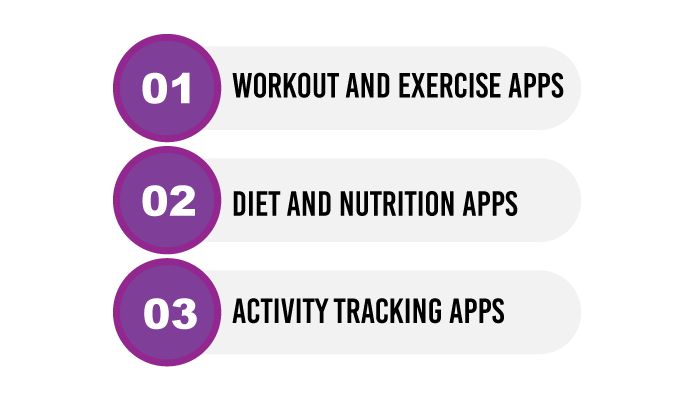
There are several types of fitness apps available in the market. The most common ones are:
A. Workout and Exercise Apps
These apps are designed to help users plan and perform their workouts. They include exercise tutorials, workout tracking, and progress tracking features.
B. Diet and Nutrition Apps
The fitness apps focus on tracking the user’s food intake and providing them with personalized diet plans based on their fitness goals. There are many who want to develop a diet and nutrition app.
C. Activity Tracking Apps
These apps track the user’s daily activity levels, including steps taken, calories burned, and distance covered.
Fitness App Development Trends
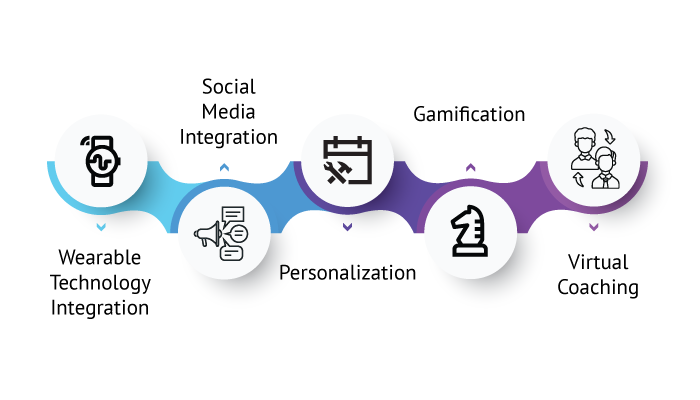
Fitness apps have become increasingly popular in recent years, as more and more people are interested in living a healthier lifestyle.
To create a successful fitness app, it’s essential to keep up with the latest trends in the industry. Here are some of the latest trends in fitness app development:
1. Wearable Technology Integration
One of the biggest trends in fitness app development is the integration of wearable technology. Fitness apps are now being designed to work with devices like smartwatches and fitness trackers, giving users a more seamless and accurate experience. By integrating with wearable technology, fitness apps can track a user’s heart rate, steps, and other important health metrics in real-time.
2. Social Media Integration
Another trend in fitness app development is the integration of social media features. Fitness apps are now being designed to allow users to share their progress and connect with others who have similar goals. This can be a great way to stay motivated and share tips and advice with others.
3. Personalization
Personalization is becoming increasingly important in fitness app development. With so many different fitness goals and preferences, users want a customized experience that is tailored to their specific needs. Fitness apps are now being designed to offer personalized workout plans, nutrition advice, and more.
4. Gamification
Gamification is another trend in fitness app development. By adding game-like elements to fitness apps, developers are making exercise more fun and engaging. Furthermore, this can be a great way to motivate users who may not enjoy traditional workouts.
5. Virtual Coaching
Finally, virtual coaching is becoming more popular in fitness app development. Fitness apps are now being designed to offer personalized coaching and support from trainers and fitness experts. This can be a great way to get personalized advice and stay motivated throughout your fitness journey.
Features To Include in Fitness App
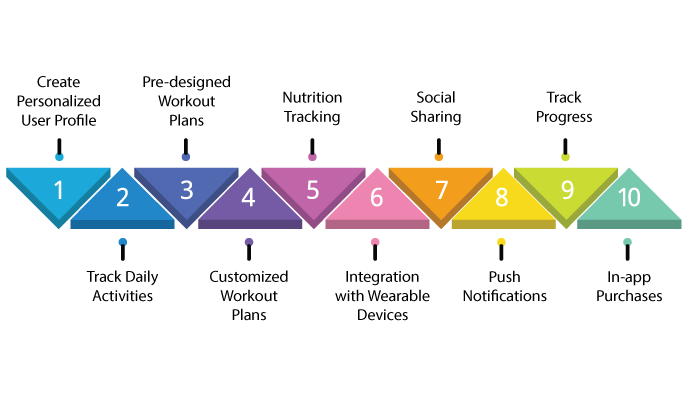
Are you planning to develop a fitness app? Then, you need to ensure that it has all the necessary features that cater to your user’s needs. Here are the ten essential features that you must consider for your fitness app:
- Create Personalized User Profile: Your app should allow users to create a personalized profile with their essential information like age, height, weight, and gender to track their fitness journey.
- Track Daily Activities: Users should be able to track their daily activities like steps taken, calories burned, and distance covered to monitor their progress.
- Pre-designed Workout Plans: Your fitness app should offer pre-designed workout plans that cater to different fitness levels and goals, helping users achieve their fitness goals.
- Customized Workout Plans: Your app should allow users to create personalized workout plans based on their fitness goals, fitness level, and workout preferences.
- Nutrition Tracking: In addition to workouts, your app should have a nutrition tracker that allows users to log their meals and track their calorie intake.
- Integration with Wearable Devices: Your app should be compatible with wearable devices like fitness trackers and smartwatches that help users track their activities accurately.
- Social Sharing: Users should be able to share their progress and achievements on social media platforms and connect with other users for motivation and support.
- Push Notifications: Your app should send push notifications to remind users about their workout schedules and motivate them to stay on track.
- Track Progress: The fintess app should allow users to track their progress over time, including weight loss, body measurements, and fitness level.
- In-app Purchases: Your app should offer premium features such as personalized coaching, workout challenges, and advanced analytics through in-app purchases.
How To Hire App Developers for Fitness App Development
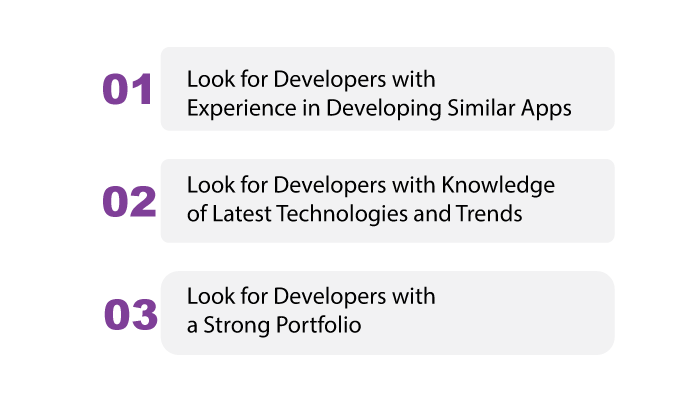
Hiring the right app developers is crucial for the success of your fitness app. So, here are some tips to consider when hiring app developers for fitness app development:
1. Look for Developers with Experience in Developing Similar Apps
It’s recommended to hire app developers with experience in developing similar apps. It can help ensure that they have the necessary skills and knowledge to create an efficient and user-friendly fitness app.
2. Find for Developers with Knowledge of Latest Technologies and Trends
Hiring developers with knowledge of the latest technologies and trends can help ensure that your fitness app is up-to-date and competitive in the market.
3. Look for Developers with a Strong Portfolio
Hiring developers with a strong portfolio can help ensure that they have the necessary experience and skills to create a successful fitness app.
Fitness App Development Process

Developing a fitness app can be a complex and multi-stage process. It is important to approach the development process systematically and with a clear understanding of the steps involved. Here is a detailed breakdown of the fitness app development process.
1. Planning and Strategy
During this phase, you will define the purpose, target audience, and features of your fitness app. You will also identify your competitors, create a budget, and determine your development timeline. The planning and strategy phase should include the following steps:
- Define the purpose of your app: What specific problem will your app solve for your users?
- Identify your target audience: Who will use your fitness app?
- Research your competitors: What features do their apps offer? What are their strengths and weaknesses?
- Create a budget: Estimate the costs of development, marketing, and ongoing maintenance.
- Determine your development timeline: How long will it take to develop your app?
2. Design and User Experience
In this phase, you will create the user interface (UI) and user experience (UX) design of your app. Goal is to make sure when you develop your fitness app, it is easy to use, visually appealing, and meets the needs of your target audience. The design and user experience phase should include the following steps:
- Develop wireframes: Sketch out the basic structure and layout of your app.
- Create mockups: Create visual representations of your app’s UI design.
- Develop a prototype: Build a functioning model of your app with basic features.
- Test your prototype: Get feedback from users to identify and fix any design flaws.
3. Fitness App Development
In this phase, you will build out the technical aspects of your app. You will also integrate any necessary APIs, databases, and third-party libraries. The development phase should include the following steps:
- Choose a development platform: iOS, Android, or both?
- Develop the backend: Create the server-side components of your app.
- Develop the frontend: Build the user-facing components of your app.
- Integrate APIs: Incorporate any necessary APIs, such as those for location services.
- Test your app: Identify and fix any bugs or performance issues.
4. Deployment and Launch
In this phase, you will prepare your app for release in the app store. The deployment and launch phase should include the following steps:
- Create an app store listing: Write a description of your app and create screenshots.
- Submit your app: Submit your app to the app store for approval.
- Launch your app: Promote your app and make it available for download.
5. Maintenance and Updates
After launching your app, you will need to continue maintaining and updating it to ensure it remains relevant and functional. The maintenance and updates phase should include the following steps:
- Monitor user feedback: Listen to user feedback and address any issues that arise.
- Fix bugs and issues: Continuously identify and fix any bugs or issues.
- Add new features: Develop and add new features to keep your app up to date and competitive.
By following these steps, you can successfully develop a fitness app that meets the needs of your users and stands out in a crowded market.
Tech Stack For Fitness App Development
To create a successful fitness app, it’s essential to use the right technology stack. Here are some of the essential technologies for fitness app development:
1. Programming Languages
Programming languages like Java, Swift, and Kotlin are commonly used for fitness app development.
2. Mobile App Development Frameworks
Mobile app development frameworks like React Native and Flutter can help create cross-platform apps that work on both Android and iOS platforms.
3. Cloud Services
Cloud services like Amazon Web Services and Google Cloud Platform can help manage the app’s backend and provide scalability.
How Much Does It Cost to Make a Fitness App?
If you are planning to develop a fitness app, the cost will depend on various factors. Here are some of the key factors that can impact the cost of developing a fitness app:
1. App Platform
The cost of developing a fitness app depends on the platform you choose. You can develop a fitness app for iOS, Android, or both. Developing a fitness app for both platforms will cost more than developing it for a single platform.
2. App Design
The design of the app can also affect the cost. If you want a custom design, you will have to pay more than using pre-made design templates.
3. App Features
The features you want to include in the app will also impact the cost. For example, if you want to include features like workout tracking, nutrition tracking, and social sharing, the cost will be higher than a basic fitness app.
4. App Development Team
The cost of developing a fitness app depends on the development team you choose. Hiring a team of experienced developers will cost more than hiring a team of less experienced developers.
5. App Maintenance
After the app is developed, you will also have to consider the cost of maintaining the app. This includes fixing bugs and updating the app to keep up with new technology.
Based on these factors, the fitness app development cost can range from $10,000 to $200,000 or more. Moving on, the cost can also vary depending on the region where the development team is located.
How To Make Money With Fitness Mobile App?
To make money with your fitness app, you need to implement effective monetization strategies. Here are some ways to monetize your app:
1. Freemium Model
The freemium model is a common strategy for monetizing mobile apps. In addition to this, the model involves offering a basic version of the app for free, while charging for access to premium features. In a fitness app development, premium features could include personalized diet plans, exclusive workout routines, or access to a community of fitness experts.
2. Subscription-Based Model
The subscription-based model involves charging users a recurring fee for access to premium content. In a fitness app, this could include personalized coaching, advanced workout plans, or access to live fitness classes. This model can be very profitable, as it provides a consistent stream of revenue.
3. In-App Purchases
In-app purchases are another way to monetize your fitness app. Plus, it involves offering users the ability to purchase premium features or content within the app. In a fitness app, in-app purchases could include access to exclusive workout routines, personalized diet plans, or one-on-one coaching sessions.
4. Sponsorships
Sponsorships are another way to monetize your fitness app development. Moreover, this strategy involves partnering with fitness brands or influencers to promote their products or services within your app. For example, you could partner with a supplement company to offer users a discount on their products, or feature sponsored content from fitness influencers.
5. Advertisements
Advertisements are a common way to monetize mobile apps. This strategy involves displaying ads within your app and generating revenue from clicks or impressions. In a fitness app, you could display ads from fitness brands or products that are relevant to your target audience.
Conclusion
Fitness app development is a growing industry with immense potential for innovation and growth. By following the steps and strategies outlined in this blog, you can create a successful fitness app that helps users achieve their fitness goals while also generating revenue for your business.
| Steps | Description |
| Step 1: Market Research | Conduct market research to identify target audience, competition, and trends in the fitness industry. |
| Step 2: Define Features & Functionality | List the features and functionality of your app, including user interface, user experience, and app integrations. |
| Step 3: The Design & Prototype | The Design and create a prototype of your fitness app. This step includes creating wireframes, user flows, and visual designs. |
| Step 4: Development | Develop your fitness app using a combination of front-end and back-end technologies. |
| Step 5: Testing & Quality Assurance | Perform testing and quality assurance to ensure your app is working correctly and meets the needs of your users. |
| Step 6: Launch & Maintenance | Launch your fitness app and maintain it by releasing updates and fixing bugs as needed. |
The cost of fitness app development in the USA can vary depending on various factors such as app complexity, development team size, and location. On average, it can cost anywhere from $10,000 to $200,000 to develop a fitness app in the USA.
The tech stack for fitness app development can vary depending on the specific requirements of your app. Some commonly used technologies include:
- Programming languages: Swift, Java, Kotlin
- Backend frameworks: Node.js, Ruby on Rails
- Database technologies: MySQL, MongoDB
- Cloud platforms: Amazon Web Services (AWS), Firebase
Some benefits of fitness app development include:
- Encouraging users to stay motivated and consistent with their fitness goals
- Providing users with personalized coaching and guidance
- Allowing users to track their progress and see their improvements over time
- Creating opportunities for social sharing and friendly competition
The time it takes to develop a fitness app can vary depending on the complexity of the app and the size of the development team. On average, it can take anywhere from 6 months to 1 year to develop a fitness app.
When choosing a development team for your fitness app, consider factors such as:
- Experience developing similar apps
- Technical expertise and skills
- Communication and project management capabilities
- Location and timezone
- Cost and budget
To market your fitness app, consider tactics such as:
- App store optimization (ASO)
- Social media advertising and influencer marketing
- Content marketing and SEO
- Paid advertising (e.g. Google Ads, Facebook Ads)
- App review sites and PR outreach
There are several ways to monetize a fitness app, including:
- In-app purchases (e.g. premium features, subscription plans)
- Advertising (e.g. display ads, sponsored content)
- Affiliate marketing (e.g. partnering with fitness brands)
- White-labeling (e.g. licensing your app to other companies)
To ensure the privacy and security of your fitness app users, consider implementing measures such as:
- Encryption of user data in transit and at rest
- Two-factor authentication and password policies
- Regular security audits and vulnerability testing
- Compliance with relevant data protection regulations (e.g. GDPR, CCPA)
- Transparent and user-friendly privacy policies and terms of service.



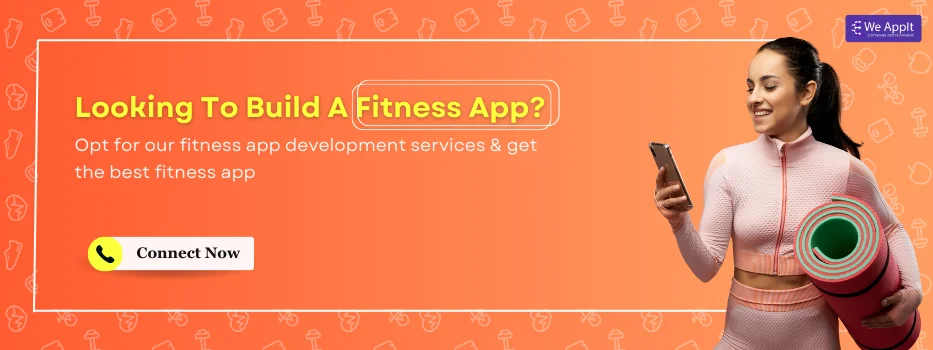


No Comments
Comments are closed.